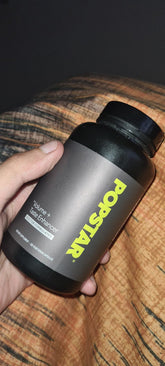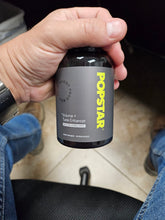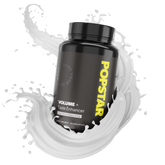Anal stretch, also referred to as anal dilation, is a procedure or practice involving the deliberate widening of the anal canal. Men’s health issues often focus on maintaining optimal bowel function, preventing anal fissures, and managing conditions like hemorrhoids. For some individuals, an anal stretch may be recommended by a healthcare provider to address specific anorectal complications or to support post-surgical recovery. In the following sections, we will explore the definition of anal stretch, why it is performed, potential benefits, risks, procedure details, and frequently asked questions. We will also look at preparation and aftercare guidelines, providing a comprehensive view that balances technical depth with a reader-friendly approach.
Table of Contents
- Definition
- Why is Anal Stretch Performed?
- Potential Benefits and Uses
- Risks and Considerations
- How the Procedure is Performed
- Preparation and Aftercare
- Common FAQs about Anal Stretch
- Conclusion
- References
Definition
Anal stretch or anal dilation refers to the manual or mechanical widening of the anal canal and surrounding muscles. The anal canal is a short passageway between the rectum and the outside of the body, regulated by two main sphincters: the internal anal sphincter (which is involuntary) and the external anal sphincter (which can be voluntarily controlled). When healthcare providers recommend an anal stretch procedure, it is usually to alleviate chronic tension or spasms in the anal muscles, address painful anal fissures, or prepare the area for rectal examinations and other anorectal interventions.
The technique can take multiple forms:
- Manual dilation: Performed by a provider or under a provider’s guidance using lubricated gloved fingers or anal dilators.
- Instrument-based dilation: Utilizing specialized, progressively sized dilators designed to gradually stretch the anal canal without causing undue trauma.
- Self-directed home dilation: In some maintenance or therapeutic scenarios, patients may be advised to perform gentle stretches at home under direct medical instructions.
While anyone can experience anorectal conditions, certain men’s health concerns, such as chronic constipation or proctological conditions, can make anal stretch a recommended approach. Over the years, continued research has examined potential short and long-term outcomes, showing that when performed correctly and for the right indications, anal stretch can contribute to improved quality of life by reducing anorectal discomfort.
Why is Anal Stretch Performed?
Anal stretch is often carried out to address issues linked to muscle tension, tissue scarring, or pressures affecting the anorectal region. Here are some of the main reasons:
- Anal fissures: Small tears in the lining of the anus can cause significant pain and bleeding. Often, anal fissures fail to heal because of persistent muscle spasm in the internal anal sphincter. Anal stretching can help relax those muscles, fostering improved blood flow to the area and promoting healing.
- Hemorrhoids: Although not the initial line of treatment for hemorrhoids, some protocols incorporate dilation to manage anal canal tension and facilitate blood circulation, thus potentially relieving discomfort in chronic cases.
- Bowel movement difficulties: Individuals dealing with chronic constipation or incomplete evacuation may find that a gentle stretching regimen helps ease straining during defecation.
- Postsurgical rehabilitation: After certain types of anorectal surgery (e.g., following hemorrhoidectomy or fistula removal), controlled stretches can help the scar tissue remain pliable and avoid narrowing of the anal canal.
- Pelvic floor dysfunction: Some men have overactive pelvic floor muscles that contribute to anorectal pain or tightness. The practice of anal stretching, particularly when combined with pelvic floor physical therapy, might offer relief by reducing tension.
Ultimately, the decision to undergo anal stretch is determined by a healthcare professional examining the patient’s overall anorectal health. In many clinical cases, conservative therapies such as dietary changes, topical creams, and warm sitz baths are tried first, with anal stretching reserved for those who require more intensive intervention.
Potential Benefits and Uses
When performed correctly, an anal stretch procedure can deliver several therapeutic benefits. These potential uses can be highly relevant for men who experience conditions linked to muscle tightness or structural challenges within the anal canal:
- Reduced anal fissure pain: Gentle, methodical stretching helps relieve internal anal sphincter spasm, which often underpins the throbbing discomfort and bleeding associated with fissures.
- Improved bowel movements: For those experiencing chronic straining and incomplete evacuation, increased flexibility in the anal canal can reduce discomfort and ease the passage of stool.
- Faster postsurgical recovery: By mitigating scar tissue adhesions and regulating muscle tension, anal stretches can accelerate healing processes after anorectal surgeries.
- Enhanced anorectal function: A key element of comprehensive gastrointestinal well-being is maintaining a balanced and responsive anal canal. Dilation may support better coordination of muscle contractions, especially for individuals with dysfunctional elimination patterns.
- Less reliance on medication: Where appropriate, anal stretching can occasionally lower the need for potent analgesics or muscle relaxants, presenting a more mechanical solution that addresses the root cause of the problem.
Not everyone will necessarily benefit from anal stretch in the same manner. It is essential to undergo medical evaluation to determine if this approach is suitable, as well as to ensure that correct technique and equipment are used. Proper guidance reduces the risk of complications and enhances the likelihood of achieving desired outcomes.
Risks and Considerations
Though anal stretch can be very beneficial, it is not without a set of potential risks or considerations. Like most medical or self-care interventions, the procedure warrants an understanding of possible complications:
- Tissue tearing: Excessive force or the wrong size of dilator can result in additional tearing inside the anal canal, potentially exacerbating existing conditions.
- Infection: Failure to adhere to sterile or clean procedures during stretching could introduce bacteria, leading to infections of the anal region.
- Short-term discomfort: Pain or discomfort can persist after the procedure, though typically it diminishes as the tissues adapt to the stretching regimen.
- Temporary incontinence: Aggressive stretching could theoretically weaken anal sphincter control, leading to momentary challenges in controlling bowel contents. However, this effect is usually temporary and tied to improper techniques.
- Underlying conditions: If an individual has undiagnosed diseases such as Crohn’s disease, ulcerative colitis, or other inflammatory conditions affecting the anorectal region, an anal stretch might need extra caution.
Considering these factors, it is crucial for anyone undertaking an anal stretch—whether supervised in a clinical setting or conducted at home—to make informed decisions and closely follow professional guidance.
How the Procedure is Performed
Anal stretch procedures can vary based on individual needs and healthcare provider preferences. Below is a generalized overview:
- Assessment and planning: Prior to the procedure, a healthcare professional performs a rectal examination to identify anatomical factors, assess sphincter muscle tightness, and rule out contraindications.
- Technique selection: The provider will decide whether to perform a manual or instrument-based dilation. In cases where sedation or anesthesia is required—common in a more formal medical setting—a short-acting anesthetic may be administered.
- Lubrication and positioning: Generous lubrication is essential to reduce friction, minimize discomfort, and decrease the likelihood of injury. The patient may lie on their side, back, or in lithotomy position as per the provider’s recommendation.
- Gradual dilation: Dilators of increasing diameter (or gentle finger expansion) are introduced slowly. The aim is to incrementally widen the anal canal without causing undue strain. A healthcare professional will typically monitor the patient’s comfort, adjusting the approach as needed.
- Post-procedure observation: Once stretching is complete, vital signs and patient comfort are monitored. If any sedation was used, recovery time is built in to ensure safety. Patients may be given instructions for at-home care, such as warm sitz baths and the continued use of topical ointments.
Some individuals undergo repeated dilation sessions over a period of weeks or months to gradually achieve lasting improvement. The focus is on striking a balance between adequate stretching and avoiding injury.
Preparation and Aftercare
Preparation and aftercare are integral to ensuring that the benefits of an anal stretch outweigh the drawbacks. Here is what patients typically need to know:
- Pre-procedure instructions: Many providers recommend a bowel cleansing regimen or an enema to ensure the rectum and anal canal are free of stool. Instructions often include refraining from eating or drinking for a certain number of hours if sedation will be used.
- Medication reviews: It is essential to disclose any current medications, especially blood thinners or nonsteroidal anti-inflammatory drugs, as these could increase the risk of bleeding or bruising.
- Rest and relaxation: The anal region is rich in nerve endings, so being calm, relaxed, and mentally prepared can significantly reduce tension and discomfort.
- Hygiene before dilation: Carefully cleaning the area can serve as an extra safeguard against infection.
Once the procedure is finished, certain aftercare steps often come into play:
- Sitz baths: Sitting in warm water for 10–15 minutes a few times a day can soothe tissues, improve blood flow, and aid healing.
- Ointments or creams: Topically applied medications may be recommended to further reduce swelling, promote wound healing, or alleviate discomfort.
- Gentle movement: Moderating strenuous activities for a day or two while incorporating light walks can help maintain good blood circulation without aggravating the area.
- Follow-up appointments: Depending on the severity of the condition or the nature of the stretch, doctors might schedule check-ins to monitor healing and decide whether additional sessions are needed.
Adhering to these guidelines makes the difference between a quick, relatively pain-free recovery and a complicated, drawn-out process with suboptimal results. Men who are especially active or who engage in certain sports may need a modified workout schedule when healing.
Common FAQs about Anal Stretch
What exactly happens during an anal stretch?
During an anal stretch, the sphincter muscles undergo gentle but progressive expansion. Depending on the method, this can involve the insertion of dilators of varying sizes, often under sedation in a clinical setting. The internal anal sphincter is primarily targeted, helping it relax and reducing spasms. By carefully applying pressure over time, healthcare providers aim to increase blood flow and alleviate constriction.
Is anal stretching painful?
discomfort can arise, but the level of pain largely depends on technique, overall anorectal health, and the use of lubrication. When performed under proper conditions—often with local or general anesthesia in a healthcare facility—pain is typically minimal or well-controlled. Even for at-home techniques, slow progression, adequate lubrication, and relaxation methods can substantially reduce discomfort.
How long does it take to see results?
Timelines vary based on individual circumstances. Some people experience relief from anal fissures and reduced muscle tension within days after just one or two sessions. Others might need a more extended series of dilations, especially if chronic issues such as long-standing fissures or scar tissue are part of the clinical picture. It is important to adhere to the recommended schedule and follow-up visits.
Does anal stretch help with hemorrhoids?
In certain scenarios, yes. Hemorrhoids are often linked to excessive straining or vascular congestion. By gently expanding the anal canal, anal stretching can sometimes reduce anal sphincter spasm, potentially alleviating pressure. However, conservative treatments—like increased fiber intake, hydration, and sitz baths—are generally the first lines of care. Hemorrhoid-specific treatments, including banding or surgical intervention, might still be necessary in more severe cases.
Can an anal stretch address pelvic floor dysfunction?
Yes. Overly tense pelvic floor muscles can contribute to anorectal pain, constipation, and discomfort during bowel movements. An anal stretch, when integrated into a comprehensive pelvic floor therapy plan, may help release unnecessary tension. Patients often combine dilation with pelvic floor exercises, biofeedback, or manual therapies to achieve full pelvic equilibrium.
Are there side effects I should be aware of?
Potential side effects include short-lived rectal pain or discomfort, mild anal bleeding, and a possible increase in sensitivity in the region. Proper hygiene and adherence to sterile techniques minimize the risk of infection. If any concerning or persistent side effects develop—such as severe bleeding, ongoing pain, or fever—medical attention is advised.
Will I lose bowel control if I stretch too often?
Generally, short-term bowel control issues can arise if the procedure is overly vigorous or improperly conducted. However, these complications are rare under professional supervision. As the tissues recover, normal control typically resumes. Ensuring that you follow a physician’s guidelines and avoid excessive force are critical to preserving proper anorectal function.
Is it safe to perform anal dilation at home?
Home-based dilation can be safe if recommended by a knowledgeable healthcare provider who offers precise instructions. It is crucial to use the right size of dilators, employ ample lubrication, and follow strict hygiene measures. Self-treatment should never be done without prior consultation, especially for individuals who have existing anorectal health complexities.
How can I minimize discomfort during daily bowel movements?
Adopting a high-fiber diet, staying hydrated, and using stool softeners (if recommended by a healthcare provider) can all reduce strain. Equally important is positioning—using a footstool to elevate the feet can help straighten the anal canal and ease bowel movements. If anal fissures are the primary issue, specific topical ointments or a mild anesthetic can also lessen pain.
When should I consult a doctor?
Consult a doctor if you notice persistent anal pain, bleeding, or a chronic sensation that your bowel never fully empties. Painful bowel movements that last for more than a few days or keep recurring could indicate anal fissures or other issues requiring professional assessment. Early diagnosis and treatment are essential for avoiding complications.
Conclusion
Anal stretch can bring therapeutic relief for men dealing with anal fissures, chronic constipation, and specific postsurgical conditions or other pelvic floor dilemmas. By consciously and carefully widening the anal canal, this practice supports healing and alleviates pain arising from spasms or structural narrowing. As with many interventions, success lies in proper technique, adherence to medical guidance, and consideration of each person’s unique condition. When done insightfully and with the right preparation and aftercare, an anal stretch can foster meaningful improvements in daily comfort and bowel health.
Always remember to consult a medical professional before undertaking any outlook-changing procedures. Even though anal stretch can be straightforward under certain circumstances, it should be tailored to each individual’s physiology and needs. Openly discuss your concerns, preexisting conditions, and medication use with your healthcare provider to safeguard the best possible outcomes for your anorectal well-being.
References
- American Society of Colon and Rectal Surgeons. (2020). Anal Fissure Management. Retrieved from: https://fascrs.org/
- National Institute of Diabetes and Digestive and Kidney Diseases. (2017). Constipation. Retrieved from: https://www.niddk.nih.gov/
- MedlinePlus. (2020). Anal Fissure. Retrieved from: https://medlineplus.gov
- PubMed Health. (2016). Hemorrhoids: Expanded Information. Retrieved from: https://pubmed.ncbi.nlm.nih.gov
- Mayo Clinic. (2021). Anal Fissure. Retrieved from: https://www.mayoclinic.org
- Reiner, V. (2021). Impact of Pelvic Floor Health on Bowel Function. Journal of Men’s Health, 17(2), 202-211.
- Smith, T. (2019). Understanding Anorectal Disorders and Treatments. Proctology Today, 28(3), 33-45.




















































